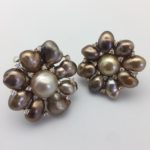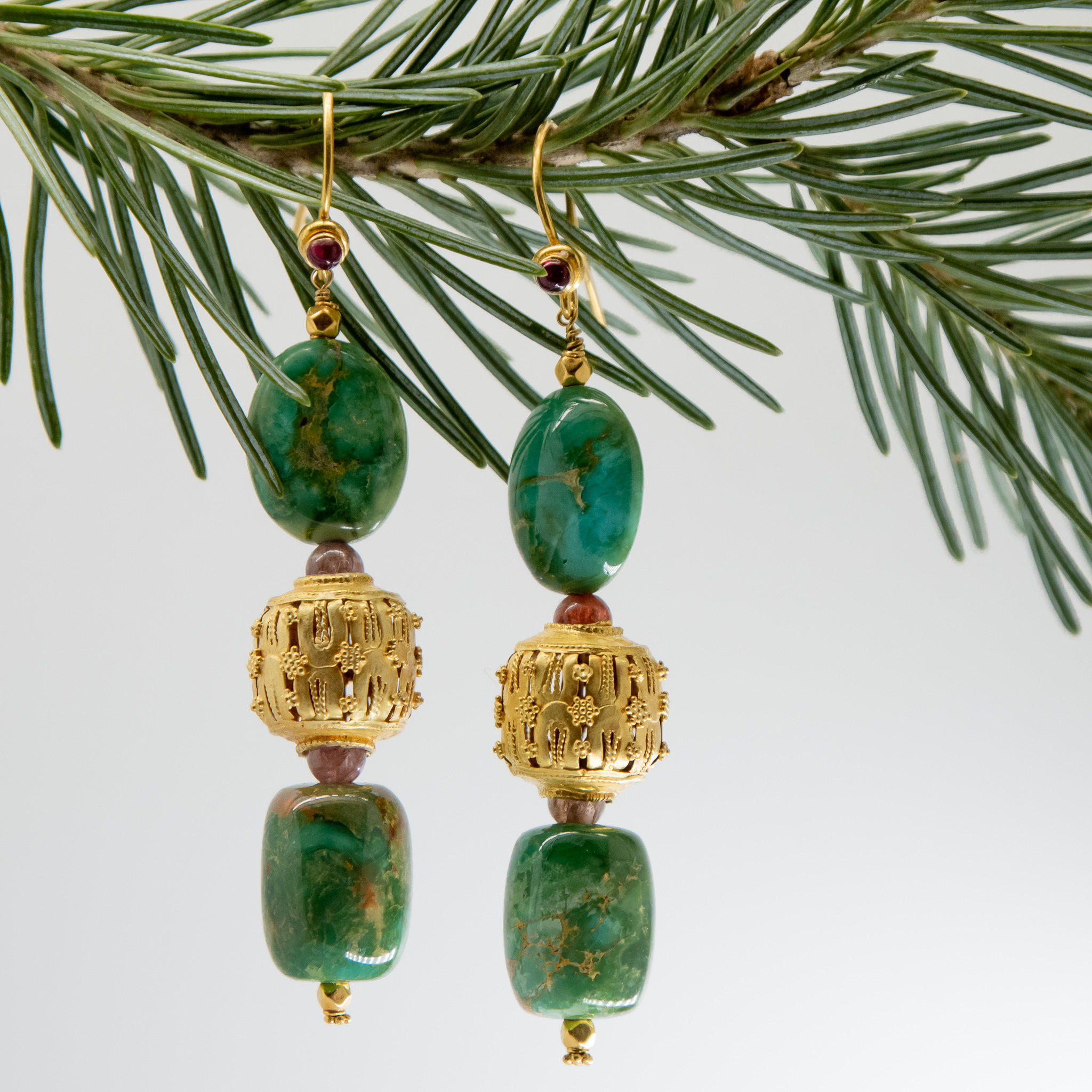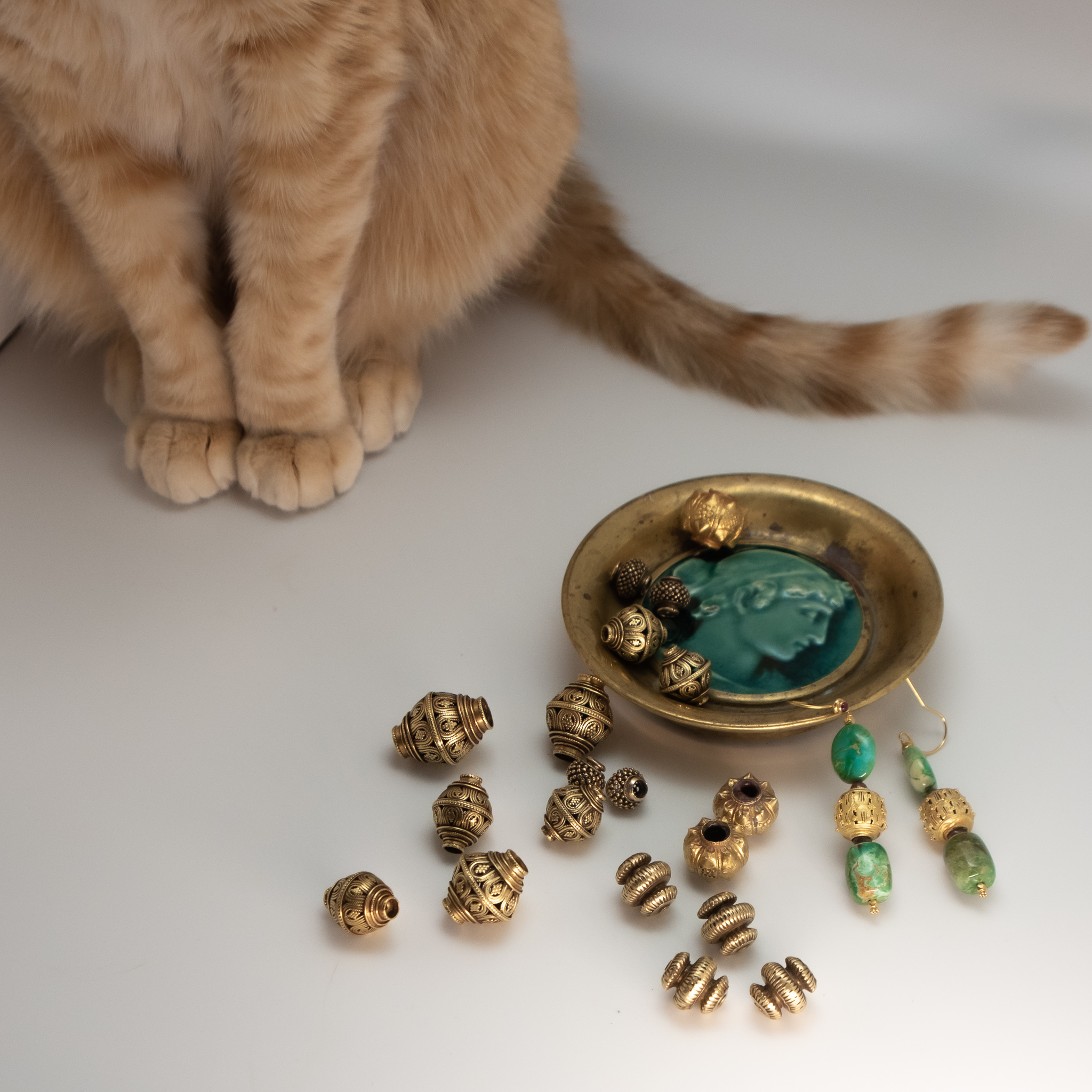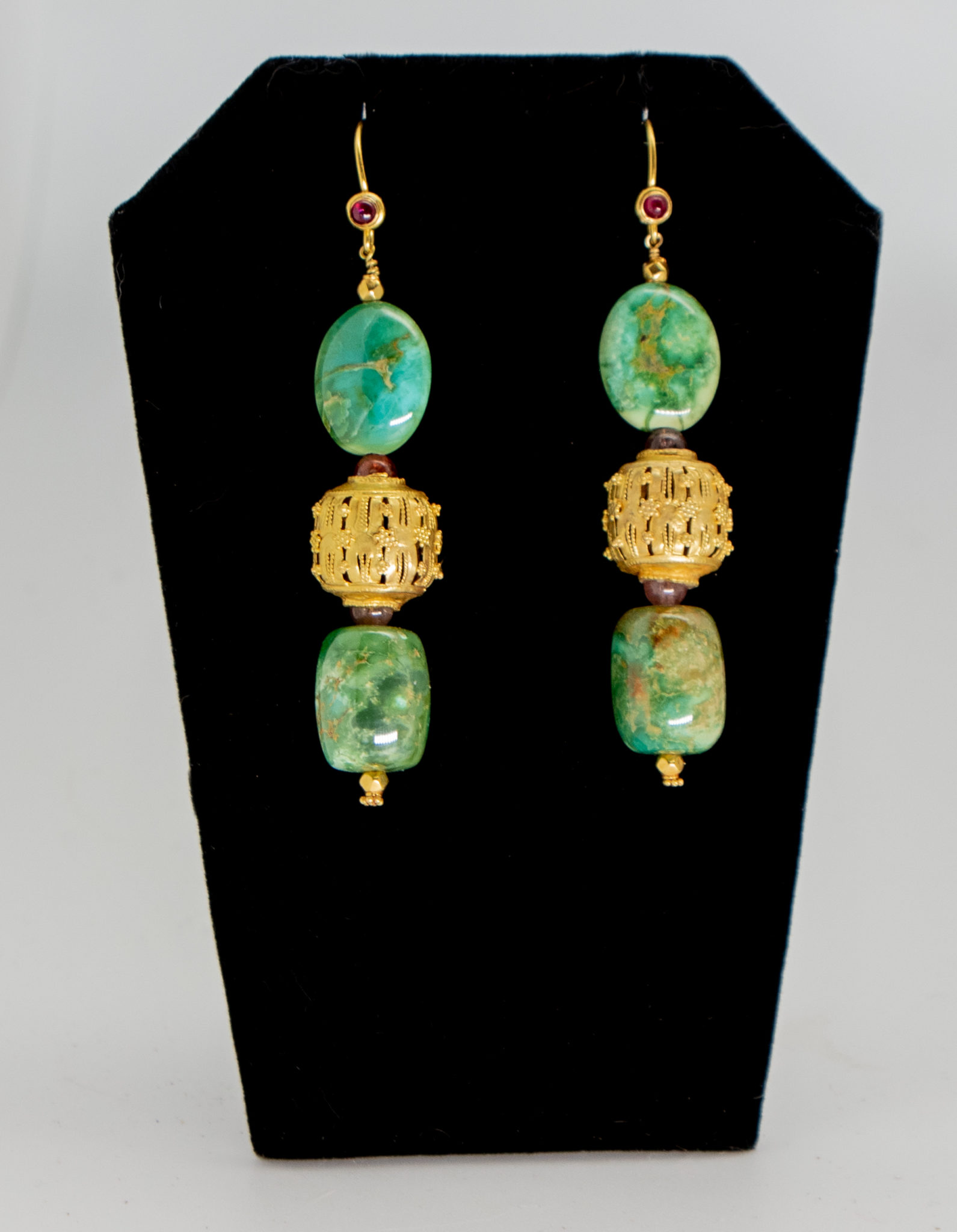Royal Beauty Turquoise Earrings with 20K Gold "Taru Sake" Barrel-Shaped Beads and Ruby Cabochon French Wires
When first encountering this distinctive gem quality natural turquoise from the mountains of central China, I was mesmerized by the intricate veining, coloring and detailed images created by this spectacular stone. Ming vases of delicate flowers, scroll paintings of misty forests and geographic maps of ocean inlets with rugged mountains reaching down to their waters, are all stories to be imagined from these stones. The coloring encompasses bright blues, olive greens and rusty browns that make each stone unique. Paired with 20K gold beads reminiscent of colorful sake barrels (taru sake), pink spinel, and 20K gold French wires with ruby cabochons, these bold and elegant statement earrings will dazzle!

designer: atelier bento
details:
- earring length: 3 inches (sit just above shoulder)
- primary stone: Royal Beauty Turquoise
- source: Hubei Province, China
- stone treatments: none
- gold content: 20K
- gold bead source: India
- French wire with ruby source: Bali
$2100
item: E 00010
availability: one-of-a-kind
CONTACT: 520-906-7187
about Chinese turquoise:
The Turquoise Museum writes that there is evidence of turquoise use in China dating at least as far back as 1700 BC as evidenced by a bronze plaque with turquoise overlay from the Erlitou culture site in Menan Province displayed at the Academy of Social Sciences in Beijing. Although some turquoise was mined in China in ancient times, more commonly it was acquired in trade with Mongols, Persians, and Turks. Mostly the Chinese used turquoise for carvings and other art. Jade has been the preferred stone for jewelry in Chinese culture. The Tibetians, on the other hand, have preferred turquoise to any other gemstone and virtually every Tibetian possesses some turquoise. Believed to bring good luck, it is worn set in rings and bracelets, as beads in necklaces, and as adornment directly on hats and other clothing. Domestic animals such as horses wear necklaces of felt with turquoise sewn on. Today China has mines that produce a great deal of turquoise. Northwest of Shanghai is the Ma'ashan turquoise mine, and the Hubei Province produces turquoise in colors reminiscent of the now closed mines in Nevada.
An interesting GIA article investigates the current production of gem quality turquoise in the mountains of central China and discusses its complex and varied composition: A relatively new source of gem-quality turquoise is hosted within slates in Zhushan County of China’s Hubei Province. Rough and polished samples were studied using standard gemological methods, as well as FTIR and UV-Vis-NIR spectroscopy. The turquoise formed nodular, massive, and veinlet assemblages. Brown and black veinlets/patches and irregular white blebs were common, and microscopic observation also revealed microcrystalline and spherulitic structures. In general, the nodular specimens were of the highest quality. The deposits show considerable potential as a commercial source of gem-quality turquoise.
YOU MAY ALSO LOVE:
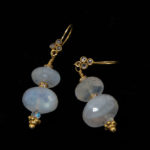
Capturing Moonbeams
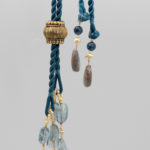
Mermaid’s Treasure
CONTACT: 520-906-7187
